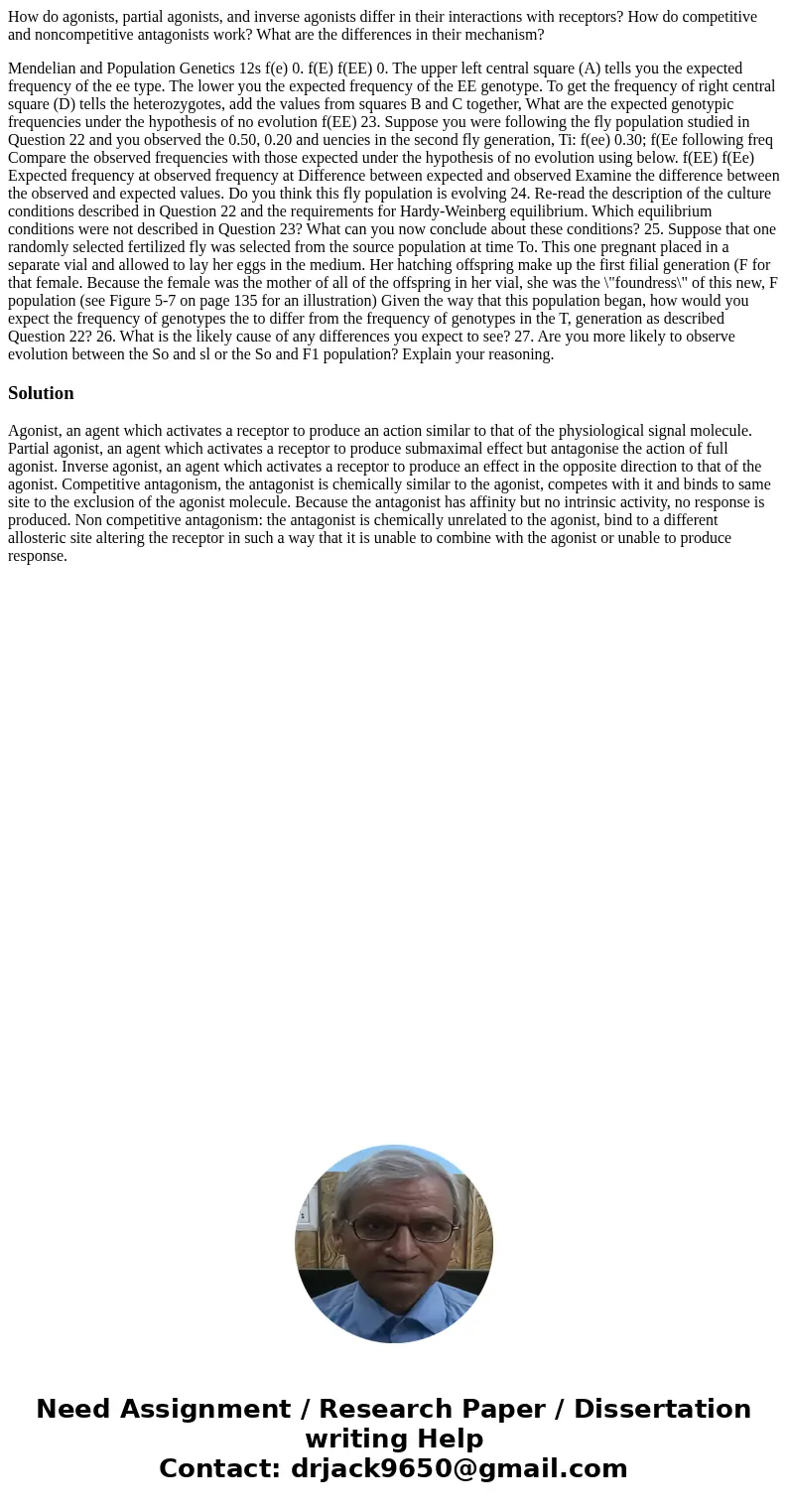How do agonists partial agonists and inverse agonists differ
How do agonists, partial agonists, and inverse agonists differ in their interactions with receptors? How do competitive and noncompetitive antagonists work? What are the differences in their mechanism?
Mendelian and Population Genetics 12s f(e) 0. f(E) f(EE) 0. The upper left central square (A) tells you the expected frequency of the ee type. The lower you the expected frequency of the EE genotype. To get the frequency of right central square (D) tells the heterozygotes, add the values from squares B and C together, What are the expected genotypic frequencies under the hypothesis of no evolution f(EE) 23. Suppose you were following the fly population studied in Question 22 and you observed the 0.50, 0.20 and uencies in the second fly generation, Ti: f(ee) 0.30; f(Ee following freq Compare the observed frequencies with those expected under the hypothesis of no evolution using below. f(EE) f(Ee) Expected frequency at observed frequency at Difference between expected and observed Examine the difference between the observed and expected values. Do you think this fly population is evolving 24. Re-read the description of the culture conditions described in Question 22 and the requirements for Hardy-Weinberg equilibrium. Which equilibrium conditions were not described in Question 23? What can you now conclude about these conditions? 25. Suppose that one randomly selected fertilized fly was selected from the source population at time To. This one pregnant placed in a separate vial and allowed to lay her eggs in the medium. Her hatching offspring make up the first filial generation (F for that female. Because the female was the mother of all of the offspring in her vial, she was the \"foundress\" of this new, F population (see Figure 5-7 on page 135 for an illustration) Given the way that this population began, how would you expect the frequency of genotypes the to differ from the frequency of genotypes in the T, generation as described Question 22? 26. What is the likely cause of any differences you expect to see? 27. Are you more likely to observe evolution between the So and sl or the So and F1 population? Explain your reasoning.Solution
Agonist, an agent which activates a receptor to produce an action similar to that of the physiological signal molecule. Partial agonist, an agent which activates a receptor to produce submaximal effect but antagonise the action of full agonist. Inverse agonist, an agent which activates a receptor to produce an effect in the opposite direction to that of the agonist. Competitive antagonism, the antagonist is chemically similar to the agonist, competes with it and binds to same site to the exclusion of the agonist molecule. Because the antagonist has affinity but no intrinsic activity, no response is produced. Non competitive antagonism: the antagonist is chemically unrelated to the agonist, bind to a different allosteric site altering the receptor in such a way that it is unable to combine with the agonist or unable to produce response.
 Homework Sourse
Homework Sourse